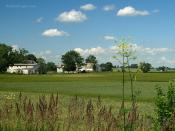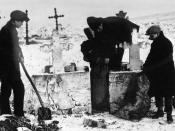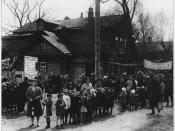Q: How successful were the Agricultural and Industrial policies pursued by the USSR in the 1930's?
My answer:
The 1930's had been a transformation for the Soviet Union, but at the end of the 1920s the Soviet Union remained a backward state in comparison with other major powers. Twelve years of Communist rule had restored the country to roughly the same position in economy that had been occupied in 1913. This can to some extent be regarded as a great achievement in view of the appalling cost of the First World War: and the following period that had been Civil War.
Agricultural policies for the peasants meant that they were driven to collective farms, which was totally against their wishes. The 'Kulaks' were either shot or taken to exile in an effort to create a classless, Socialist society in the countryside and to modernize the primitive state of Soviet Agriculture.
While this was taking place, three 'Five Year Plans' had set impossible targets for the industrial enterprises. Huge power plants, new canals and railways, with the vast new industrial complexes, which were all, constructed from scratch, which were mostly in hospitable climates and terrain. In order to complete these transformations, the party believed a new culture with different attitudes had to be built. Those people who did not actively support the new objectives set for the Soviet people were now seen as 'enemies of the people', whether they were party members or not. From 1925 and onwards, private traders and entrepreneurs in the cities and industrialized regions had to face increasingly harsh taxes and even faced arrest. It therefore seemed a growing contradiction to allow private farmers greater freedom to make profits in the countryside. For all members of the party socialized farming meant collective farms. Lenin was the first...


